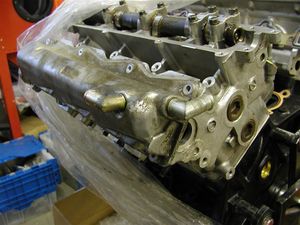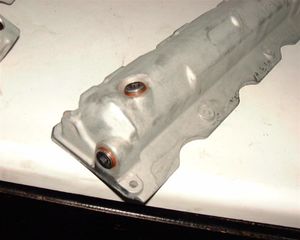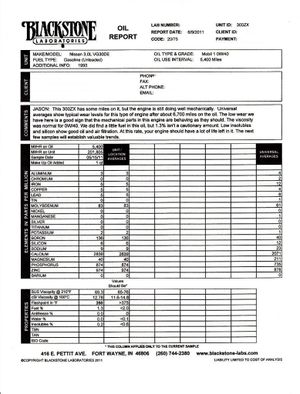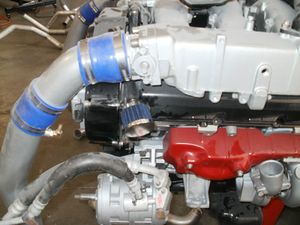PCV Delete
As an alternative to rerouting the PCV system, some owners opt to remove the system outright. There is a bit of controversy over the safety and effectiveness, but for the most part, it is an accepted method to help simplify the engine bay.
Contents
Procedure
Prerequisites: Remove the intake manifold and valve covers. Thanks to Ash for originally posting this procedure here.
Tools Needed
- 3/8" NPT tap
- Pliers
- Scissors/snips for cutting hose
Parts Needed
- <1ft of 1/2" rubber hose.
- 2x small air filters (they look like baby pop chargers). Must have 1/2" ID opening.
- 2x 1/8" BSPT plugs.
- 2x 5/8" NPT Plugs.
Removing & Blocking the Old Ports
- Locate the original breather ports and remove them with pliers (they're just pressed in). Remove the hoses if you haven't already done so.

- Tap the holes with the 5/8" NPT tap.
- Thoroughly clean the valve covers with brake parts cleaner to get rid of any metal shavings.
- Install your 5/8" NPT plugs. Use some liquid gasket to make a good seal.

Alternatively, some use 5/8" press-fit freeze plugs and liquid gasket to avoid having to drill and tap.
Blocking the Plenum Fittings & PCV Ports
- If you haven't already done so, remove the PCV hoses that lead to the back of the engine, and remove the lines at the back of the engine.
- Remove the PCV valves on the underside of the intake manifold.
- Install the 1/4" BSPT plugs into the PCV valve fitting on the plenum. Use a small amount of liquid gasket maker to ensure a good seal.
- Be careful not to over-tighten them, as the holes are conical, and over-tightening them will cause the port on the plenum to split.
- Install the 1/4" rubber caps onto the nipple on the accordion pipes which used to run to the intake valve covers.
Installing Breathers (Optional)
- Cut approximately 4" of your 1/2" rubber hose.
- Insert a 1/2"x1/2" barbed-to-barbed fitting into the hose. Use a spring clamp if necessary to keep its fit snug.
- Install your small breather filter at the other end of the barbed fitting.
- Fit the new hose/filter assembly to the old PCV port on the intake valve covers. Use a spring clamp if necessary.
- Repeat for the opposite side.
Note: Some owners opt to simply remove the PCV valve and rear pipe routing, but leave the intake valve cover to accordion pipe hoses in place. This is completely optional.
Controversy
Some have noted that removing the PCV system could lead to excess crank case pressure, or that TTs create too much blow-by and this method will blow out the dipstick and have oil draining from the filters. However, as long as the intake valve ports are open (filtered or hooked up to the accordion pipe), the crank case can breath. This bypass also has no effect on the blow-by created by the engine, and shouldn't affect the system's ability to manage such blow-by. The PCV system is largely an emissions control feature; older vehicles simply allowed excess vapor to ventilate and oil to drain to the ground.
Finally, it has been argued that allowing the PCV system to breath via a filter will allow water to contaminate the gasoline. However, a member (xpwarrior on tt.net) recently had his oil analyzed after running for several thousand miles with the system deleted. In fact, this owner didn't even use filters, and instead just let the pipes breath straight to the ground.
Original thread here. Analysis report mirrored below.

